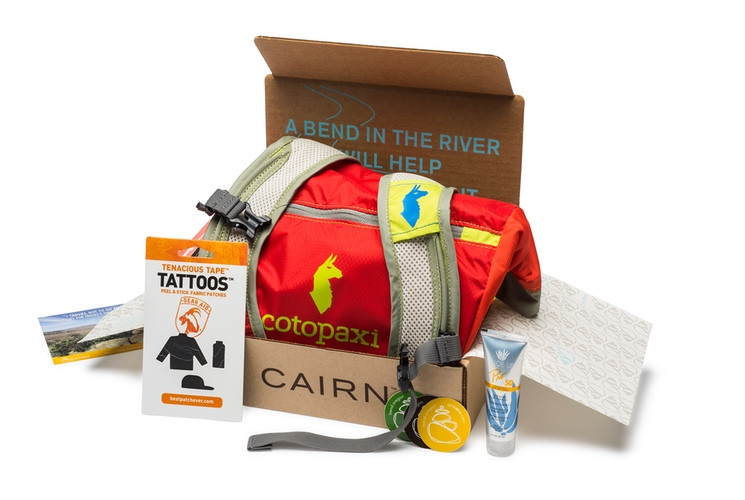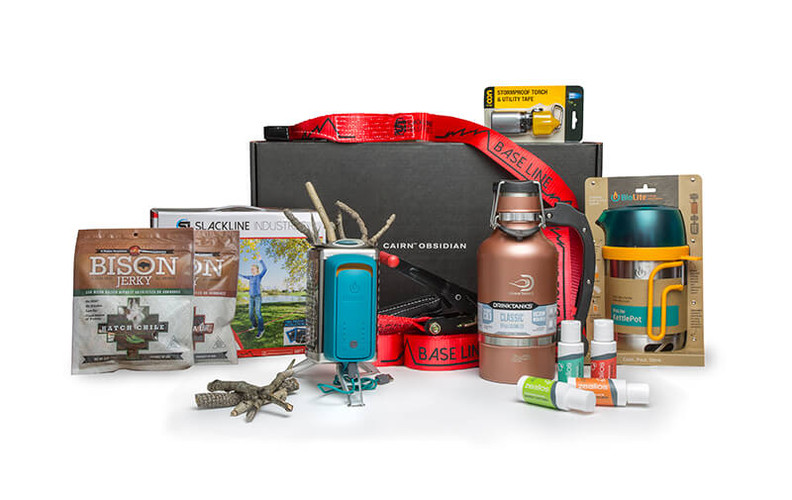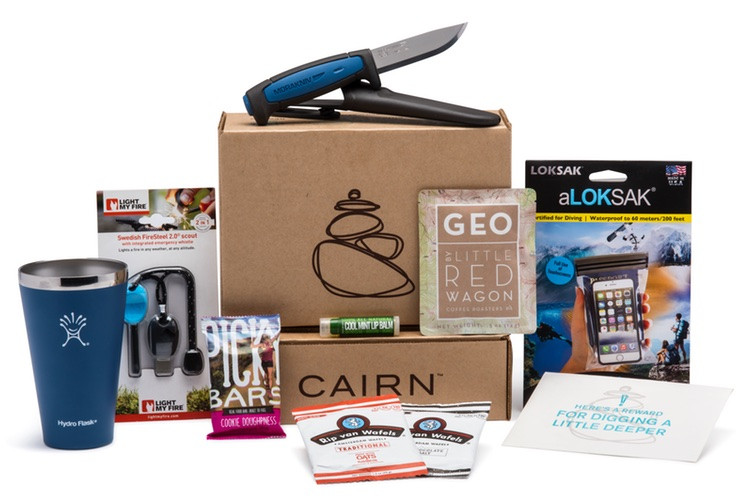Getting into the outdoors is often as simple as lacing up your favorite running shoes and hitting the closest trail.
However, when you are ready to tackle some bigger endeavors – be it your first outdoor rock climb, a long backpacking trip, or even a backcountry ski tour – the right gear makes all the difference. Often times though, many of us don’t know where to start when it comes to finding new gear; and a few missteps while you’re building up a good collection of outdoor gadgets can set you back quite a bit of money.
Our friends at Cairn have been a huge help in navigating new sport specific gear over the last few months. Their subscription box ($30 monthly) shows up at our door every month with a fresh set of gear from new and established brands. If ever you needed an excuse to get out and expand your gear knowledge and adventure horizons, Cairn is the perfect vehicle to do that.
Cairn was founded in early 2014 by a pair of Wharton School classmates studying innovative retail strategies. After seeing successful campaigns in the apparel and food markets, they realized that there really wasn’t a retail brand that was shaking up the outdoor industry. Their ideas on how to introduce the average consumer to emerging brands and new outdoors gear formed the foundation for Cairn’s subscription model. That means you get to reap the benefits of their work, as each monthly subscription box tends to be worth around double what you’re paying.
How It Works
When you initially sign up with Cairn, you’ll create a profile including some of your outdoor interests so that their team can customize each box. This is our favorite part of the Cairn system – not every box sent out will be the exact same, and when there is a theme to a given month, you might be getting some tailored items for your sport of choice. Additionally, each month Cairn partners with different outdoors brands for their Adventure Upgrade program, which rewards a random subscriber with some unique gear – last month, Cairn gave away a pair of Schwood Eyewear to one lucky subscriber.
Beyond the regular monthly subscription, Cairn has a premium program for the outdoorsman looking for a little more curated gear. The quarterly Obsidian Box will set you back $199, but a quick glance at the spring collection (featuring products from Biolite, Drink Tanks, Slackline Industries, and UCO), reveals that you’re getting a steal – and building up a good stable of adventure gear in the process. Whether you’re just venturing off the trail for the first time, or ready to discover new top-shelf gear, this is the box for you.
For $10 off your first month, sign-up here.





